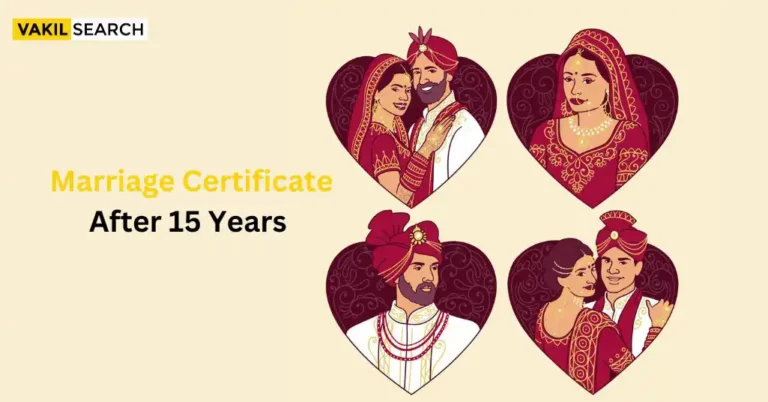This informative blog has stated the ins and outs of the Hindu Marriage Act. Giving this blog a thorough read can help you learn about the same.
India is a varied nation. In India, family law doesn’t differ from one state to the next. A separate legal system governs every community. Even if community members are domiciled, settled, or dwell in any country, they will be governed by a single legal system. However, there may be differences in the legislation based on sects, sub-sects, castes, or sub-castes. It’s founded on customs, which cause differences between groups. People of all castes and religions reside together in India. Marriages in India are performed following local customs and traditions. Kanyadan is the Hindu marriage term dating back to the Vedic period. According to their custom, the bride’s father gets her “Kanya” (daughter) married to the bridegroom. In our culture, this age-old custom of gifting daughters via weddings is still practised. This article will go through the legal aspects of Hindu weddings in India. Hindu weddings are usually performed in accordance with the terms of the Hindu Marriage Act of 1955.
Hindu Law: Detailed Explanation
Well, Hindu law is a discipline of law that derives from the Smritis, which is documented in Sanskrit comments and digests. The Smriti scriptures distinguish between legal and religious norms, and these religious precepts were treated as legal standards. Hindus adhere to Hindu law. However, it is not the core Hindu law that applies to Hindus in India, but rather an amended and modified legislation that has changed significantly.
Basically,
- Original Hindu law does not cover all parts and is subject to alterations and adjustments;
- Original Hindu law has been tainted by changing societal expectations and requirements.
Evolution of Original Hindu Law to Modern Hindu Law
The Hindu Marriage Act was designed to protect the rights of the Hindu bride and groom tied together by the holy bond of marriage. The type of ceremony necessary is not specified in the law since various methods exist for a man and woman to marry according to Hindu religious custom.
- The Hindu Marriage Act was passed in 1955
- The Hindu Adoption and Maintenance Act of 1956 governs Hindu adoption
- The Hindu Succession Act of 1956 governs succession issues
- The Hindu Minority and Guardianship Act of 1956, for example, governs minors.
The statute was inspired by the fraud case and the humiliation endured by people in the name of marriage. As a result, the act binds everyone Hindu, Jain, Sikh, or Buddhist. It has no bearing on Muslims, Christians, Parsis, or Jews because different laws govern them. As a result, the Hindu Marriage Act binds Hindus by birth as well as Hindus by religion.
So, Who’s a Hindu?
The definition of Hindu is defined in Section 2 of The Hindu Marriage Act. According to the provision, the Act applies to every Hindu by religion or who has converted to any of its forms, like a Lingayat, Virashaiva, or a member of the Arya, Brahmo, or Prarthana Samaj. The statute applies to everyone who professes to be a Sikh, Jaina, or Buddhist. It also applies to anybody residing outside of this region who isn’t a Parsi, Muslim, Jew, or Christian. It has been established that such a person is governed by Hindu Law
As per the Act, the following individuals are also categorised as Hindus:
- A Hindu is any kid, illegitimate or legitimate, whose parents are Hindus, Sikhs, Jainas, or Buddhists.
- A Hindu is any kid, illegitimate or legitimate, born to a Hindu, Sikh, Jaina, or Buddhist parent and raised as a member of the community, tribe, family, or group to which the parents belong or belongs.
- A Hindu is somebody who re-converts or converts to the Hindu, Sikh, Jain, or Buddhist religions.
Hindu Marriage: Conditions
The 1955 Hindu Marriage Act (Section 5) specifies the requirements for a Hindu Marriage. It reads:
- A person may not live with two spouses at the same time
- At the time of marriage, the bridegroom must be 21 years old and the bride must be 18 years old, and neither party must be incapable of providing legal consent due to insanity
- If the parties are capable of giving legal consent, they must not have a mental illness that renders them unfit for online marriage certificate registration and childbearing
- Neither party should be subjected to insane assaults regularly
- Unless their customs or usage enable them to form such a married connection, the parties should not be sapindas of each other and should not be in the banned degrees of relationship.
1955 Hindu Marriage Act: Essential Features
Section 5:
Listed below are the salient features of the 1955 Hindu Marriage Act (Section 5):
- Opposes Bigamy: Well, the law forbids a man from having more than one wife at the same time. Section 5 of the Act specifies that a person may not have two live wives simultaneously, which is considered bigamy. It indicates that a person cannot marry again until the prior marriage is terminated (divorce). If he does the offence, he will be prosecuted under IPC sections 494 and 495.
- Mental Capacity or Health: If a person has mental illness at the time of marriage, the marriage is null and invalid. It is also vital for the individual to provide legal permission for the marriage. Section 5(ii) a,b,c details the prerequisites of Hindu marriage relating to mental health and competence.
- Marriageable Age: The ideal age for getting married is prescribed by legislation. According to Section 5 (iii) of the Hindu Marriage Act 1955, the bridegroom must be 21 years old, and the bride must be 18 years old at the time of marriage. If a marriage is not completed, it has no legal standing and is null and invalid.
- Prohibited Degree of Relationship: According to Hindu law, when two people put forward Pinda to the same ancestor, they’re Sapindas to one another. Sapindas are individuals who have a common ancestry. Marriage between sapinda relatives is illegal under the law.
Section 7:
The rites for a Hindu marriage are outlined in Section 7 of the Hindu Marriage Act.
Section 9:
The 1955 Hindu Marriage Act (Section 9) offers for the recovery of conjugal rights. These rights are rights derived from a marital tie, and recovery of conjugal rights is the reciprocal right to stay. The core of Section 9 of the 1955 Hindu Marriage Act is that a spouse has the right to maintain and preserve the purity of their wedding through cohabitation.
The following are the fundamental elements of Section 9 of the Hindu Marriage Act:
- According to the legislation, a marriage between two people is required
- A spouse must withdraw from the society of the other spouse
- There should be no reasonable clauses in the withdrawal
- The harmed person may seek recovery of conjugal rights
- The court must be pleased with the party’s statement
- As a result, the Court may issue a decree to the injured party
- If the action is successful, the pair may be able to live together.
Hindu Marriage: Registration
Well, the State Government has adopted guidelines that offer the particulars pertaining to their wedding and the conditions stipulated in the Hindu Marriage Register as evidence for Hindu weddings. According to the instruction given by the State Government, entering the particulars in sub-section (1) would be mandatory in the State for specified instances. If this rule is broken, the individual will be fined ₹25. The Hindu Marriage Register will be accessible for examination at reasonable times and used as proof of assertions. The Registrar issues this upon payment of the specified fee. The neglect to make the entry has no bearing on the legitimacy of the Hindu marriage.
Divorce in India
Marriage was considered sacred and an irreversible bond between two people throughout ancient times. As per Manu, a wife’s obligation continues even after her death. She should never have a second husband, according to tradition. The Hindu Marriage Act of 1955 created the provision for divorce. Divorce, according to the Act, signifies the dissolution of a marriage.The harmed party may petition the court to dissolve the marriage and seek redress. Section 13 of the Hindu Marriage Act 1955 specifies the reasons for divorce in Hindu law.The reasons for a wife petitioning the court for divorce are outlined in Section 13(2) of the legislation.
Divorce in India: Grounds and Reasons
Some reasons for divorce are specified in Section 13 of the Hindu Marriage Act and are listed below:
- Cruelty: Cruelty encompasses both emotional and physical abuse. Cruelty is defined as injury perpetrated by one spouse, like beating or using weapons to injure another individual. Cruelty sometimes includes mental abuse by a partner. The lack of compassion from one party has a detrimental impact on the well-being of another. However, determining mental cruelty is challenging. Mental cruelty by a spouse against his wife comprises the following:
- False accusation of adultery
- Demanding dowry
- Impotency
- Immoral lifestyle and uncontrollable substance abuse
- Extra-marital affairs of husband.
- Adultery: Adultery is a significant basis for divorce under the Hindu Marriage Act. Adultery is defined as the voluntary and consenting intercourse of a married individual with another married or unmarried person of the opposite sex. Intercourse between the husband and second wife is also deemed bigamy and punishable by adultery.
- Desertion: Desertion refers to the permanent abandoning of one spouse by another. There must be no plausible justification, and there should be no consent. Desertion occurs when a person rejects or withdraws from the commitments of marriage.
- Insanity: A person’s incurable unsoundness of mind is a legal reason to seek a divorce. For instance, if a person discovers that their partner suffers from mental illnesses after marriage, they might seek divorce.
Conclusion
Well, the Hindu Marriage Act handles Hindu-related laws. Meanwhile, Christians and Muslims have laws that control religious practices. Modern Hindu law has experienced several changes due to judicial interpretations and legislative amendments. The Hindu Marriage Act was created to protect the rights of ‘Hindu’ people. However, scheduled tribes are exempt from both codified and uncodified laws since tribal norms control them.To learn more about the 1955 Hindu Marriage Act and its nature of registration and/or divorce-related issues, you can contact Vakilsearch at any time. Our legal experts would be delighted to assist you.










